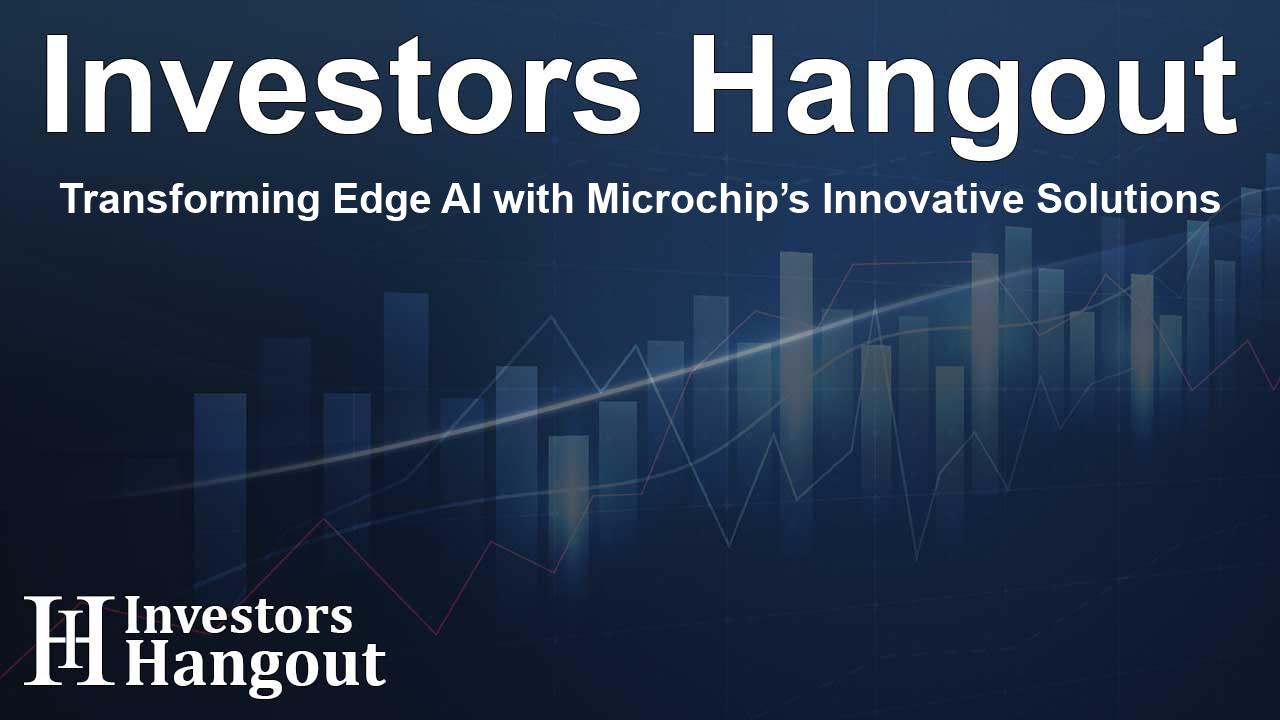Transforming Edge AI with Microchip’s Innovative Solutions

Microchip Empowering AI-Driven Sensor Processing
Microchip Technology has taken a significant step towards enhancing artificial intelligence (AI) capabilities with the introduction of its latest product, the PolarFire FPGA Ethernet Sensor Bridge. This innovative product works in conjunction with NVIDIA's Holoscan platform, aiming to empower developers in building advanced sensor processing systems.
Advanced Features of the PolarFire FPGA Ethernet Sensor Bridge
The PolarFire FPGA offers multi-protocol support which is essential for developers working on sensor-driven applications. The product's compatibility with various MIPI CSI-2-based sensors, alongside other protocols such as SLVS-EC 2.0 and 12G SDI, stands as a testament to its versatility. With this solution, designers can utilize the NVIDIA Holoscan ecosystem more efficiently while benefiting from the power-efficient technology of the PolarFire FPGA.
Streamlined AI Development
NVIDIA Holoscan significantly simplifies the development cycle of AI and high-performance computing applications, particularly at the edge where real-time data processing is critical. This platform integrates the necessary hardware and software, offering low-latency sensor streaming and robust network connectivity. With optimized libraries for data processing and AI models ready for deployment, developers can accelerate their projects swiftly.
Bridging Real-time Data with Edge Applications
The PolarFire FPGA Ethernet Sensor Bridge connects real-time sensor data seamlessly to the NVIDIA Holoscan, IGX, and Jetson platforms. This capability opens doors to various edge-to-cloud applications, fostering the growth of AI and machine learning (ML) in key sectors such as medical, industrial, and automotive. This adaptability is crucial for addressing market demands for innovative AI solutions.
Safety and Reliability in Sensor Applications
Emphasizing security and reliability, the PolarFire FPGAs are designed with embedded safety features to safeguard against cyber threats. They offer robustness that is vital in environments that demand high data integrity, including high-altitude and medical contexts. Additionally, their immunity to single event upsets (SEUs) reduces the risk of data corruption, ensuring stable operation in challenging conditions.
A Commitment to Innovation
Bruce Weyer, Microchip's vice president of the FPGA business unit, articulated the company’s vision, highlighting that the Ethernet sensor bridge is based on their power-efficient, secure PolarFire FPGA platform. By merging flexible FPGA capabilities with NVIDIA's multi-protocol support, Microchip is equipping developers with the tools needed to create real-time solutions that can transform the landscape of AI-driven applications.
Microchip's focus on low power consumption is pivotal for managing high-bandwidth data across diverse sensors efficiently via Ethernet, while ensuring high-performance processing on NVIDIA AI platforms. This approach not only enhances the capabilities of developers but also resonates with the growing need for environmentally sustainable solutions in tech.
Explore Microchip’s Cutting-Edge Solutions
For those interested in learning more about how Microchip’s development tools support NVIDIA Holoscan and other applications, visit the dedicated page for the PolarFire FPGA Ethernet Sensor Bridge. With a commitment to providing innovative and efficient solutions, Microchip Technology Inc. continues to play a crucial role in driving forward the integration of AI technology across various industries.
Frequently Asked Questions
What is the purpose of the PolarFire FPGA Ethernet Sensor Bridge?
The PolarFire FPGA Ethernet Sensor Bridge is designed to enhance AI-driven sensor processing by providing low-power, multi-protocol support compatible with various sensor types.
How does NVIDIA Holoscan contribute to AI applications?
NVIDIA Holoscan streamlines the development and deployment of AI applications through integrated hardware and software solutions, ensuring low latency and high performance.
In what industries can the PolarFire FPGA technology be utilized?
The technology is applicable across multiple industries, including medical, industrial, and automotive sectors, enabling advanced AI applications.
What makes Microchip’s FPGAs reliable for critical applications?
Microchip's FPGAs are equipped with embedded security features and are designed to handle challenging environments, providing stability and data integrity.
Where can I find more information about Microchip's products?
You can find more details about Microchip's innovative products on their official website, which offers a comprehensive overview and resources for developers.
About Investors Hangout
Investors Hangout is a leading online stock forum for financial discussion and learning, offering a wide range of free tools and resources. It draws in traders of all levels, who exchange market knowledge, investigate trading tactics, and keep an eye on industry developments in real time. Featuring financial articles, stock message boards, quotes, charts, company profiles, and live news updates. Through cooperative learning and a wealth of informational resources, it helps users from novices creating their first portfolios to experts honing their techniques. Join Investors Hangout today: https://investorshangout.com/
Disclaimer: The content of this article is solely for general informational purposes only; it does not represent legal, financial, or investment advice. Investors Hangout does not offer financial advice; the author is not a licensed financial advisor. Consult a qualified advisor before making any financial or investment decisions based on this article. The author's interpretation of publicly available data shapes the opinions presented here; as a result, they should not be taken as advice to purchase, sell, or hold any securities mentioned or any other investments. The author does not guarantee the accuracy, completeness, or timeliness of any material, providing it "as is." Information and market conditions may change; past performance is not indicative of future outcomes. If any of the material offered here is inaccurate, please contact us for corrections.